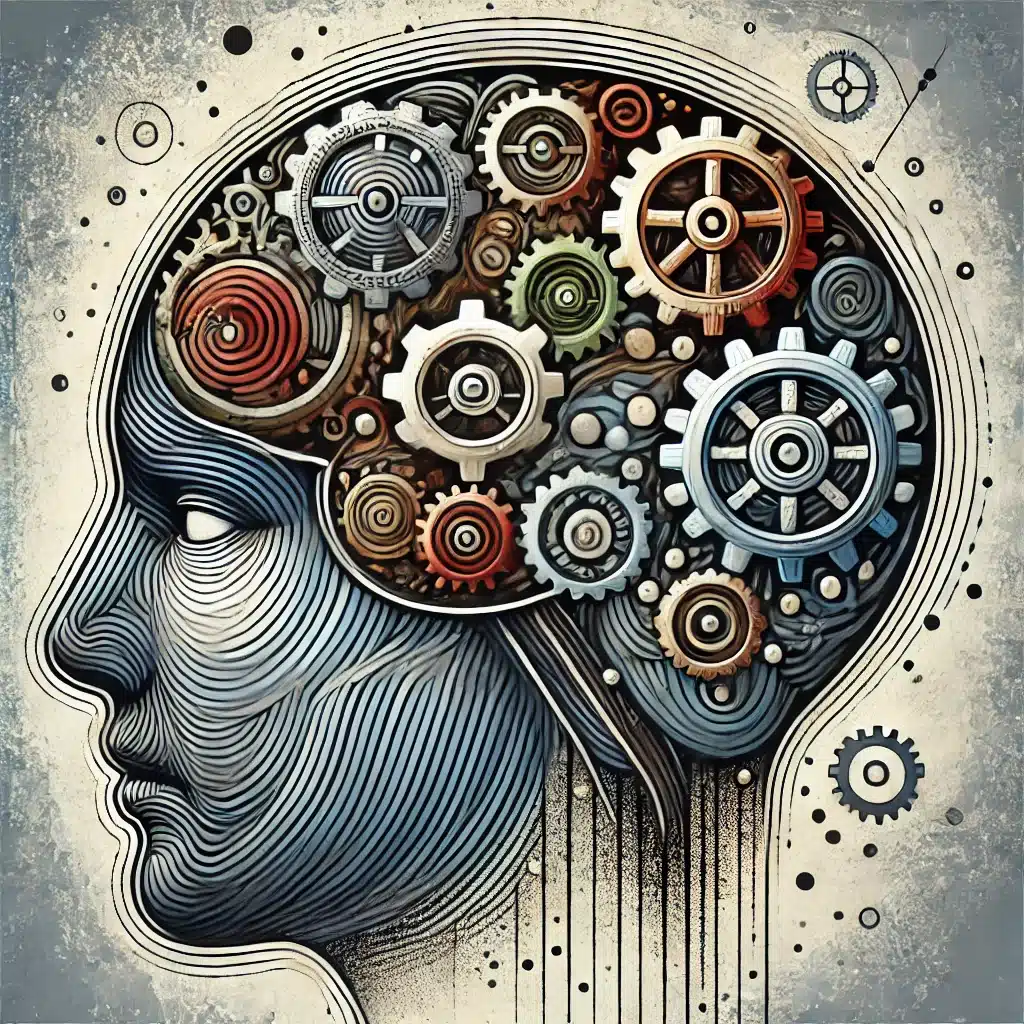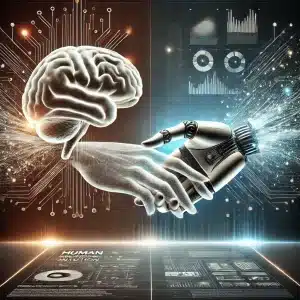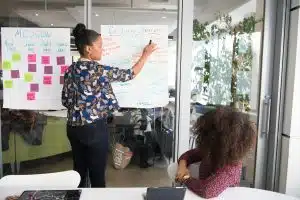As you look at the world of work, do you feel the pace of change pressing in? Technology is moving at lightning speed, employees are asking for more humanity from their leaders, and uncertainty seems to have become the norm. Leadership today is no longer just about vision, it is about feeling and adapting.
And that means one thing: to thrive, you need to blend emotional intelligence with technological fluency, particularly around AI. If that sounds like a big ask, don’t worry, we’re going to unpack how you can make it real in your own leadership.
Why emotional intelligence matters more than ever
Think about the best leader you’ve ever worked with. Chances are, they didn’t just know the strategy inside out, they knew how to listen, how to support you, and how to create a space where you felt seen, understood, and cared for. That’s emotional intelligence at work.
For years, EI was written off as a “soft skill.” Nice to have, but not critical. Today, that view has changed. Research shows it’s the very thing that gives leaders an edge in complexity. And it’s not just theory, leaders who show empathy, compassion, resilience, and self-awareness are the ones building trust, inspiring loyalty, and helping their people navigate change.
Now imagine you’re leading a team through a restructuring or introducing a new AI tool. You could focus only on efficiency and process, but what happens to the fear, doubt, and uncertainty in the room? Leaders who lean into compassion acknowledge those emotions, listen, and communicate transparently. And guess what? Their teams adapt faster, because people know they matter.
So, let me ask you: how often do you pause to really check in on the emotions in the room?

Why AI fluency is becoming essential
On the flip side, let’s not pretend we can lead without understanding technology. AI is here, not as a future possibility, but as a daily reality. It’s reshaping everything: hiring, customer service, data analysis, even the way we brainstorm.
AI isn’t a competitor. It’s a collaborator. Forward-looking leaders don’t see it as a threat; they see it as an amplifier, freeing people to do the more human, creative, and relational work. But to lead effectively, you can’t just nod at AI from a distance, you need to get curious. Play with the tools. Understand both the potential and the pitfalls.
AI isn’t neutral. It raises questions about bias, fairness, and ethics. Imagine rolling out AI in recruitment. If you just plug it in, you risk amplifying bias. But if you bring your curiosity and values into the process, involve diverse voices, and put safeguards in place, suddenly AI becomes a partner you can trust.
So, my question to you: are you experimenting with AI right now, or still waiting on the sidelines?

The leader for today: empathy and foresight in balance
Here’s where it all comes together. The most relevant leaders today are the ones who:
- Lead with trust, empathy, compassion, and resilience.
- Stay curious and fluent in AI, using it thoughtfully and strategically.
It’s not either or, it’s both and. Emotional intelligence grounds people. AI fluency powers performance. When you bring them together, you get leaders who can humanise technology and future-proof their organisations.
Imagine this: two leaders both tasked with driving digital transformation. One is brilliant with AI but ignores the human side. They’ll hit short-term goals, but long-term? Disengagement and attrition. The other combines AI fluency with compassion and caring. They anticipate anxieties, explain the “why,” and support people with the change. Which leader would you rather follow? I know which one I prefer…
How to bring this balance to life
Here are some practical starting points you can put into action:
- Start with self-reflection: Ask yourself, what are my triggers? How do I respond under pressure? Emotional intelligence starts with self-awareness.
- Build AI literacy: You don’t need to code, but you do need to explore. Try prompting tools like ChatGPT. Ask yourself, “Where could this help my team?”
- Foster psychological safety: Do people feel safe to speak up around you, especially about change and uncertainty? If not, start there.
- Lead with ethics: Don’t chase efficiency at the cost of fairness. Talk openly about how your organisation is using AI responsibly.
- Encourage continuous learning: Show your team that both human and technical skills are a work in progress for everyone.
Which of these could you commit to this month?
Practical examples of leading with both heart and foresight
Let’s make this real with a few snapshots:
- Communication during change: A company introduced AI-driven scheduling software. Instead of dumping it on staff, employees were involved in the change process and people managers supported and trained to manage the people side of the change. Engagement, adoption and usage was smoother, morale stayed high.
- AI in performance reviews: One organisation used AI to analyse performance trends, but leaders paired it with regular coaching conversations. People felt supported, not reduced to data.
- Resilience training: Some companies now teach mindfulness and stress management alongside technical upskilling. Leaders come out calmer, clearer, and more capable of leading in volatility.
Which of these feels most like your current challenge?
The risks of imbalance
It’s worth pausing here. If you lean only into AI and forget the people side, you risk alienating your workforce. You’ll get efficiency but lose trust. If you lean only into the people side and ignore AI, your organisation risks falling behind. Neither extreme works. Balance is the only sustainable path.
So, where are you on that spectrum right now, more heart or more technical?

Turning uncertainty into growth
The pace of change isn’t slowing down. That can feel overwhelming, but it’s also an opportunity. If you lead with intelligence, both emotional and technological, you can turn uncertainty into growth. You can create a culture of curiosity, resilience, and innovation. And you’ll be remembered as the leader who didn’t just survive disruption, but used it to build something stronger.
Final thought
So here’s my invitation: invest in both your heart and your foresight. Develop your emotional intelligence as deliberately as you explore AI. Stay curious, stay grounded, and remember, leadership isn’t about choosing between people and progress. It’s about bringing them together.
And I’ll leave you with this: if you had to choose one action to start with tomorrow, building emotional intelligence or building AI fluency, which would it be?





